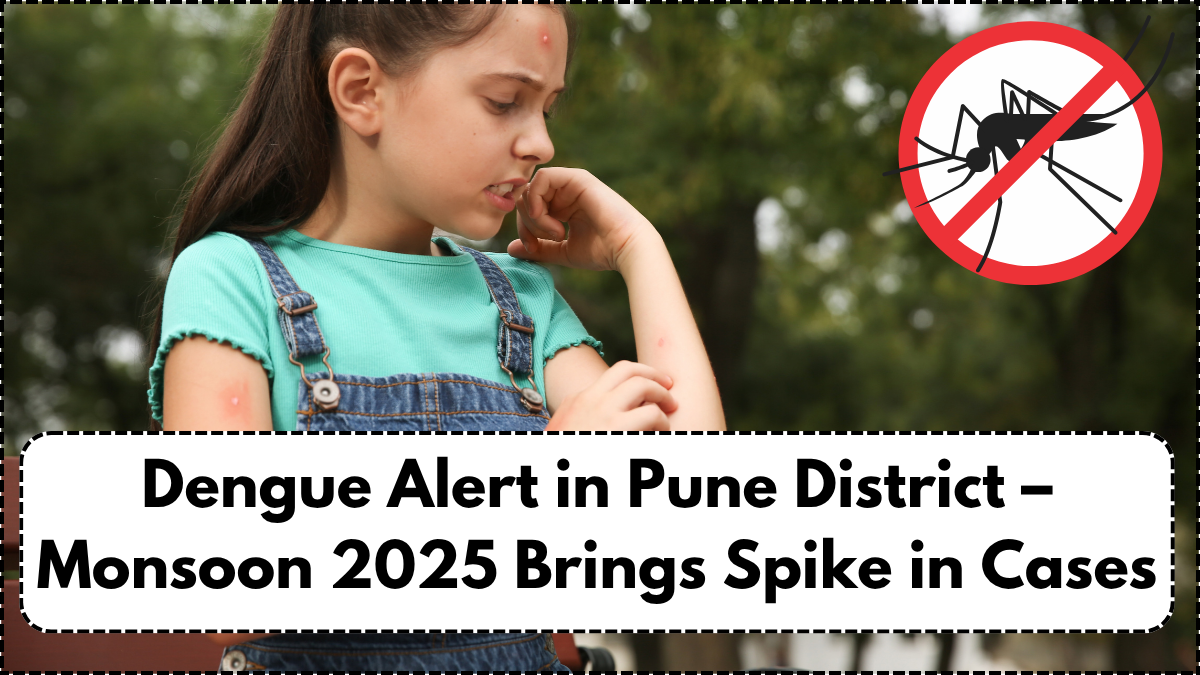As the monsoon sweeps through Maharashtra, a fresh wave of health concerns has emerged across rural regions. The Dengue Cases in Pune have seen a significant rise in July 2025, particularly in the talukas of Baramati, Shirur, and Mulshi. The district health department has issued a strict alert to local medical authorities, municipal bodies, and residents to take immediate action to prevent a wider outbreak.
According to recent reports, over 300 confirmed dengue cases have already been registered this season, with more suspected patients under observation. The rapid increase is being attributed to stagnant water, poor drainage, and changing climate patterns — key elements fueling the mosquito population responsible for dengue.
With dengue pune 2025 trending in public health circles, civic officials have stressed the urgency of preventive action and community awareness in order to curb further infections.

Affected Areas and Numbers – Where the Spike Is Highest
A significant portion of new Dengue Cases in Pune is concentrated in rural and semi-urban areas. Local health centers are overwhelmed, and vector control teams are working round the clock to trace and eliminate breeding sites.
Here’s a snapshot of the most affected zones:
| Region/Taluka | Reported Cases (July 2025) | Status |
|---|---|---|
| Baramati | 75 | High Alert |
| Shirur | 58 | High Alert |
| Mulshi | 49 | Moderate |
| Junnar | 38 | Moderate |
| Bhor | 34 | Under Watch |
| Haveli | 29 | Mild Outbreak |
This data highlights that dengue pune 2025 is not limited to urban slums alone but is spreading rapidly into farming and tribal areas due to unchecked water accumulation and limited awareness of monsoon health practices.
Causes Behind the Monsoon 2025 Dengue Outbreak
Public health experts have pointed to a combination of climatic, environmental, and human factors behind the sharp rise in Dengue Cases in Pune this year. With unusually heavy rains during the pre-monsoon season and weak sanitation infrastructure in many talukas, Pune’s rural belt has become a breeding ground for Aedes mosquitoes.
Key contributing factors include:
-
Overflowing drains and water tanks left open
-
Improper garbage disposal in rural and semi-urban areas
-
Infrequent fogging and anti-larval spraying
-
Delayed community response due to lack of awareness
-
Rise in temperature and humidity aiding mosquito breeding
The monsoon health environment, combined with poor community hygiene, is amplifying the situation — urging both citizens and the government to act decisively.
Health Department Action and Prevention Measures
To combat the growing number of Dengue Cases in Pune, the district administration has intensified its preventive and response strategies. Mobile medical teams have been deployed in rural belts, and door-to-door campaigns are being carried out to spread awareness.
Active measures under implementation:
-
Daily fogging in critical zones identified through case mapping
-
Anti-larval treatments in water bodies, construction sites, and drains
-
Distribution of mosquito nets and repellents in affected households
-
Free testing camps and fever surveillance in primary health centers
-
Public awareness drives promoting monsoon health precautions
Authorities have also requested gram panchayats and school management committees to contribute to local cleanliness initiatives.
What Pune Residents Can Do to Stay Safe
Whether living in the heart of the city or in a small village near the Sahyadris, every citizen can play a role in minimizing the risk of dengue during this vulnerable monsoon health season.
Simple steps include:
-
Regularly empty and clean water containers around the house
-
Keep windows and doors closed during dawn and dusk
-
Wear long-sleeved clothing and use insect repellent when outdoors
-
Avoid allowing stagnant water near homes, especially in pots, tyres, and tanks
-
Seek medical help immediately upon experiencing high fever, joint pain, or rashes
As the dengue pune 2025 situation unfolds, timely intervention can mean the difference between safety and outbreak.
Conclusion
The sharp spike in Dengue Cases in Pune during Monsoon 2025 is a clear warning sign. With changing weather patterns and ongoing sanitation challenges, the threat of vector-borne diseases is becoming more persistent. The focus now must be on community engagement, better hygiene, and proactive medical care to ensure this outbreak is contained before it escalates further.
From rural villages to city suburbs, Pune’s collective response in the coming weeks will determine how quickly the region can bounce back from this seasonal health crisis.
FAQs
What areas in Pune are most affected by dengue in July 2025?
Baramati, Shirur, and Mulshi have reported the highest number of Dengue Cases in Pune, with alerts issued in multiple talukas.
What are the symptoms of dengue to watch for?
Common signs include high fever, severe headache, muscle pain, joint pain, nausea, skin rashes, and fatigue — all common during the dengue pune 2025 spike.
Is the city of Pune also affected, or only rural areas?
While the majority of cases have been reported in rural regions, parts of Pune city are also under watch due to recent rains and poor drainage systems, prompting monsoon health checks in urban wards.
How is the local government responding to the dengue rise?
The health department has increased fogging, launched medical camps, distributed mosquito repellents, and initiated door-to-door awareness campaigns in all dengue pune 2025 zones.
What can I do to prevent dengue at home?
Maintain hygiene, empty stagnant water, cover water containers, wear protective clothing, and use repellents to reduce your chances during this monsoon health season.
click here to learn more